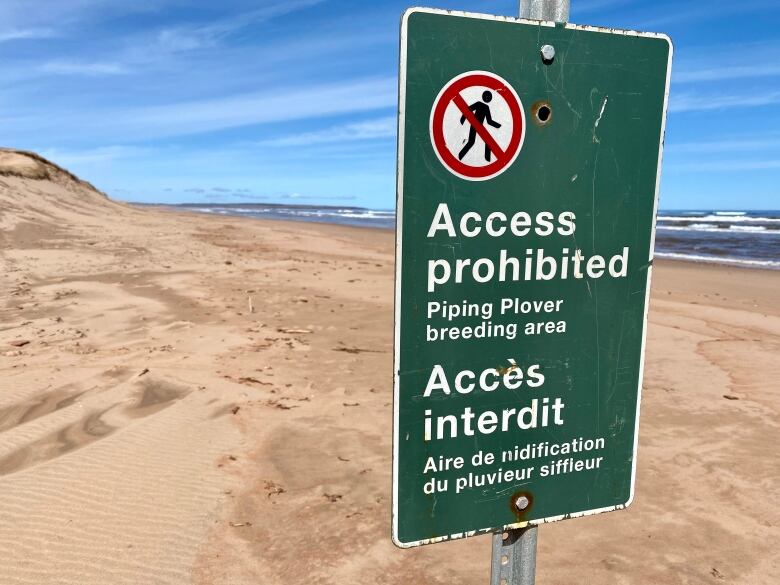Parks Canada prepares for piping plovers' summer return
"They look like little cotton balls running around on these sweet little legs'
Parks Canada has already closed a section of beach known as the Cavendish Sandspit to make space for the seasonal return of the endangered piping plover.
The shorebird returns to the beaches of P.E.I. each year for breeding and to raise their young, typically arriving in mid to late April.
The piping plover has been listed as endangered by the Committee on the Status of Wildlife in Canada since 1985.
"Under the Federal Species of Risk Act, Parks Canada is responsible for the protection and recovery of listed species at risk in its national parks, national marine conservation areas and national historic sites," said Jennifer Stewart, acting manager of external relations with Parks Canada on P.E.I.
"The piping plover is an endangered species which is listed on schedule one of S.A.R.A. and so to that effect Parks Canada has a legal obligation to help protect and recover this species."
The piping plover nest in pairs. The preferred location is wide patches of beach above the high water mark that is covered in shells and rocks.
This is so the birds can use the natural features to camouflage themselves from their predators. They are often on the lookout for foxes, crows and seagulls — freezing in place to blend into the rocky sand.
Once a suitable territory is found, the male bird will dig a shallow scrape in the sand among the rocks and shells for the nest. He will even break up small pieces of shell and line the rim of the nest cup with those during the courtship period.
He will often dig a few and the female will choose which one to use.
The female will then lay the first egg, and then wait two days before laying another.
It will lay eggs every two days until they have four or five in the clutch.
Then birds will then take turns incubating the eggs 24 hours a day for a few weeks before the eggs all hatch together on the same day.
"It's really amazing because when the piping plover chick hatches, they often weigh three grams — they look like little cotton balls running around on these sweet little legs," Stewart said.
"Then within 20 to 25 days, those chicks have reached adult size and they have feathers and they can sustain flight."
The baby birds will then leave the nest and forage for food. They will eat along the water line and in where the seaweed and debris collect at the high tide mark.
They will then forage for food until they are large enough to make the flight to the southern wintering grounds, often by early fall.
During their time on the beaches of P.E.I., parks staff in P.E.I. National Park do what they can to ensure the plovers remain undisturbed.

Dogs are prohibited on all beaches in the P.E.I. National Park to protect all shorebirds and the fragile habitat of the piping plovers from April 1 until Oct. 15.
Once an area of beach has been determined to have a nesting pair of plovers, it could be sectioned off so that people don't disturb the nest and the birds in the area.
They also have a resource conservation team which monitors the beaches to find where the plovers are nesting while in the park areas.
"From year to year, the total number of adult piping plovers in P.E.I. National Park can vary," Stewart said.
"In 2019, we had 13 pairs of piping plover — so 26 adult piping plovers in P.E.I. National Park. Last year, in 2020, we had 10 pairs of piping plovers."

Stewart also reminds visitors to park sites to pack out all their waste and stay off the fragile dune habitats.
If someone does spot a plover in the park, Stewart said, they are asked to report it to staff so it can be investigated.


